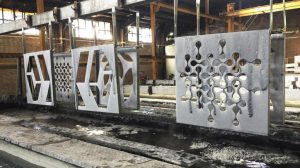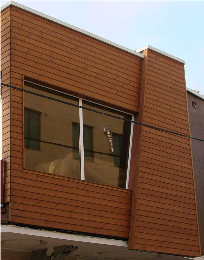Frameless glass window detail
Frameless glass windows have gained popularity in recent years due to their sleek and modern look. They offer a clear view of the outdoors, letting in ample amounts of natural light and creating a seamless transition between indoor and outdoor living spaces. In this article, we will delve into the details of frameless glass windows, including their design, installation, and maintenance.

Design
Frameless glass windows are designed without the use of any visible frames or sashes, resulting in an unobstructed view of the outdoors. This creates a modern and minimalistic look, making it a popular choice for contemporary homes and offices. These windows are typically made of toughened or tempered glass, which is more durable and safer than traditional glass.
There are two main types of frameless glass windows: fixed and sliding. Fixed windows are stationary and cannot be opened, while sliding windows can be opened by sliding one panel over the other. Sliding frameless glass windows are a great option for creating a seamless transition between indoor and outdoor living spaces, as they can be opened completely to let in fresh air and sunlight.

Installation
The installation process for frameless glass windows can be complex and should only be done by experienced professionals. The installation process involves attaching the glass panels to the building’s structure, which is typically made of steel or aluminum. The glass panels are then held in place using special fittings, which are hidden from view, giving the illusion of a frameless window.
The installation process starts with measuring the window opening to ensure that the glass panels are the correct size. The glass panels are then manufactured to the correct size and shape, ensuring a perfect fit. The glass panels are typically 10mm to 12mm thick, making them more durable and able to withstand more weight than traditional glass.
After the glass panels have been manufactured, they are transported to the building site and carefully installed by a team of experienced professionals. The glass panels are then secured to the building’s structure using specially designed fittings, which are hidden from view to create a seamless and frameless look.
Maintenance
Frameless glass windows are relatively easy to maintain. The glass panels can be cleaned using a soft cloth and a mild detergent. It is important to avoid using abrasive cleaners, as they can scratch the glass surface. It is also important to avoid using high-pressure water jets, as they can damage the fittings that hold the glass panels in place.
It is recommended that frameless glass windows be inspected regularly to ensure that they are in good condition. Any cracks or chips in the glass should be repaired as soon as possible to prevent further damage. It is also important to check the fittings regularly to ensure that they are secure and in good condition.

Advantages of Frameless Glass Windows
There are several advantages to using frameless glass windows in your home or office. Some of the main advantages include:
Unobstructed view: Frameless glass windows offer an unobstructed view of the outdoors, letting in ample amounts of natural light and creating a seamless transition between indoor and outdoor living spaces.
Modern look: Frameless glass windows have a modern and minimalistic look, making them a popular choice for contemporary homes and offices.
Durability: Frameless glass windows are made of toughened or tempered glass, which is more durable and safer than traditional glass.
Energy efficiency: Frameless glass windows are energy-efficient, helping to reduce your energy bills and your carbon footprint.
Easy maintenance: Frameless glass windows are relatively easy to maintain, requiring only periodic cleaning and inspection.
Disadvantages of Frameless Glass Windows
Despite their many advantages, there are also some disadvantages to using frameless glass windows. Some of the main disadvantages include:
Cost: Frameless glass windows can be more expensive than traditional windows due to the specialized installation process and the high-quality materials used.
Safety concerns: While tempered glass is more durable than traditional glass, it can still shatter under extreme stress. This means that safety precautions must be taken when installing and maintaining frameless glass windows to prevent injury.
Privacy concerns: Frameless glass windows offer an unobstructed view of the outdoors, but they also offer an unobstructed view into your home or office. This may not be desirable in all situations, and privacy screens or curtains may need to be used.
Limited insulation: While frameless glass windows are energy-efficient, they offer less insulation than traditional windows, which may not be desirable in colder climates.
Conclusion
In conclusion, frameless glass windows offer a sleek and modern look that is ideal for contemporary homes and offices. They offer an unobstructed view of the outdoors, letting in ample amounts of natural light and creating a seamless transition between indoor and outdoor living spaces. However, the installation process can be complex and should only be done by experienced professionals, and safety precautions must be taken when maintaining and cleaning frameless glass windows. While they can be more expensive than traditional windows, their durability and energy efficiency may make them a worthwhile investment for many homeowners and businesses. Overall, frameless glass windows are a great option for those who value aesthetics and a connection with the outdoors.





Leave A Comment